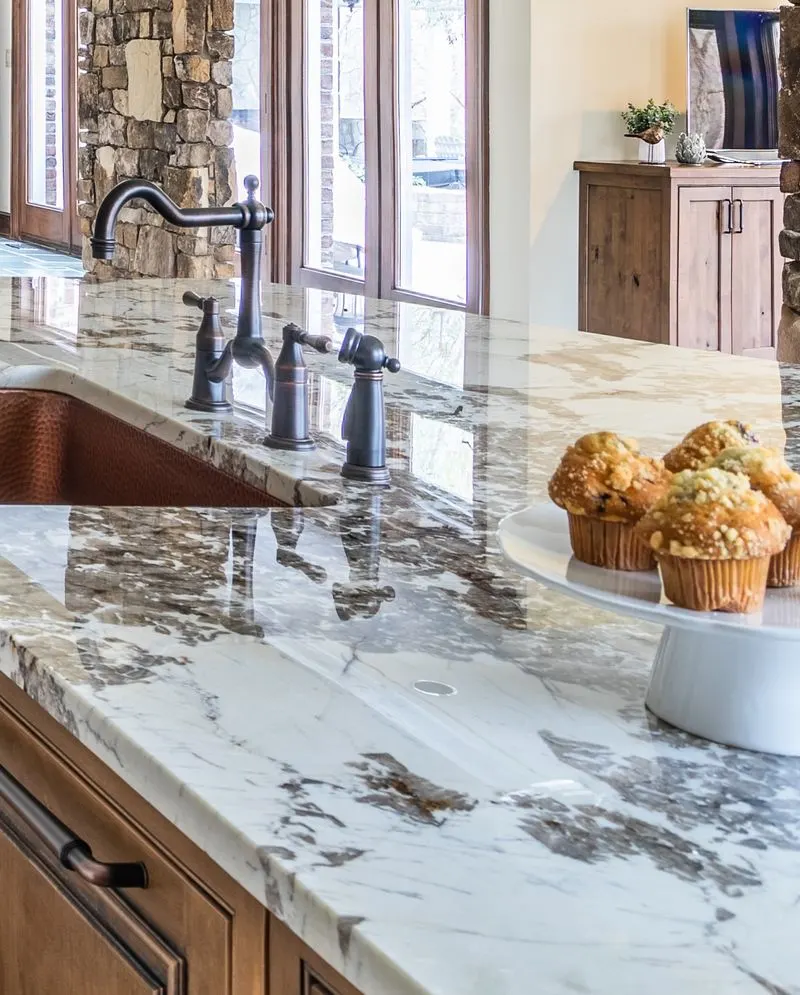Home renovation trends come and go, reflecting changing tastes, lifestyles, and design innovations. As we look ahead to 2025, several once-popular styles and concepts are starting to lose their appeal, making way for fresher, more practical ideas.
In this list, we’ll explore seven home renovation trends that are on their way out.
If you’re planning a remodel or just curious about what’s next in home design, these fading trends might inspire you to take a different direction and embrace what’s new and timeless.
Open Shelving

Open shelving in kitchens once symbolized modernity and openness. However, the charm fades when practicality is considered. Dust and the constant need for organization quickly become overwhelming.
For many, the idea of displaying every dish and glass is losing its appeal, as homeowners look for more functional and less maintenance-heavy alternatives. Closed cabinetry is making a comeback, offering both style and substance.
In smaller spaces, these shelves can make the area feel cramped. As a result, many are choosing sleek, closed storage solutions that keep their space tidy and hassle-free.
Barn Doors

Barn doors brought rustic charm to homes, offering a sliding alternative to traditional doors. Yet, their bulky presence can clash with modern aesthetics.
These doors often lack soundproofing, making them impractical for bedrooms or offices where privacy is key. The trend is giving way to more subtle door designs that integrate seamlessly into contemporary living spaces.
Moreover, they can appear out of place in urban settings, where sleek and minimalist interiors dominate. As homeowners strive for cohesive design, these doors are being replaced by quieter and more elegant options.
Granite Countertops

Once a symbol of luxury and durability, granite countertops are losing their edge. The maintenance and susceptibility to staining make them less appealing.
Homeowners are turning to options like quartz, which offer similar aesthetics with greater resilience and less upkeep. Furthermore, the desire for unique kitchen designs is steering people towards more customizable materials, such as concrete or butcher block.
In a world moving towards sustainability, eco-friendlier surfaces are taking precedence. This shift reflects the growing trend of choosing materials that combine beauty with practicality and environmental consciousness.
Industrial Lighting

Industrial lighting, with its exposed bulbs and metallic finishes, was once the epitome of edgy design. However, its starkness is starting to feel out of place in cozy home settings.
People are gravitating towards softer, more ambient lighting that creates a welcoming atmosphere. The harsh glare of industrial lights can be too intense for residential spaces, prompting a shift to designs that prioritize comfort and warmth.
As interior design evolves, the trend is moving towards fixtures that blend style with functionality, ensuring spaces are both aesthetically pleasing and inviting.
Accent Walls

Accent walls once added a pop of color and personality to rooms, but they can now seem disjointed and outdated. The trend towards uniformity in wall colors is gaining traction, emphasizing harmony and flow throughout the home.
People are opting for tones that complement each other rather than stark contrasts. This shift allows for greater flexibility in decorating and keeps spaces feeling fresh and cohesive.
In contemporary design, the focus is on textures and subtle color variations, creating interest without overwhelming the senses.
Fast Furniture

The allure of fast furniture is waning as consumers become more eco-conscious. These pieces, often mass-produced, quickly show signs of wear and lack the durability of investment furniture.
Modern homeowners prioritize quality and sustainability, choosing timeless pieces that align with environmental values. This shift is fueled by a desire for longevity and a reduced carbon footprint.
In an era where mindful consumption is key, the focus is on fewer, better-quality items that enhance living spaces while remaining kind to the planet.
Gray Interiors

Gray interiors once defined elegance and modernity, yet their dominance is fading. The monotone palette can feel cold and uninspiring, prompting a search for color diversity.
Homeowners are embracing richer, more vibrant hues that inject life and personality into their spaces. This trend celebrates individuality and creativity, moving away from one-size-fits-all design.
As the desire for warmth and character grows, interiors are becoming a canvas for personal expression, reflecting a shift towards more dynamic and engaging environments.

